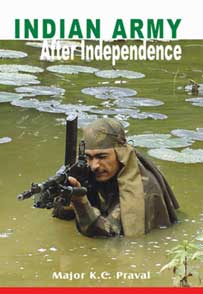Lieutenant General Manekshaw succeeded Kaul in the command of 4 Corps. It fell to him to reorganize and refurbish the defences of NEFA. He went round the various units and spoke to officers and men to raise their morale and to listen to their complaints, so that corrective action could be taken.
Manekshaw’s assessment was that NEFA could have been defended. He said, “The only reason for failure was that morale was low, absolutely low. There was no higher direction – from Delhi, or from the Army or corps commanders. . . . The troops were demoralized because of their commanders”.
It was decided to put into effect a plan for the expansion, re-equipment and reorganization of the Army. Its strength was to be doubled in a phased programme over the next few years.
Regarding Lieutenant General Sen’s part, this is what Manekshaw had to say. When I took over, I asked General Sen, . . . “Bogey, why didn’t you come as Army Commander, sack the Corps Commander and take over yourself ?” His reply was: “It is all very well for you to say this, Sam; but do you know what his stature was then? He never talked to me; he would just pick up the phone and talk to the Prime Minister. He never even consulted the COAS. I would have got no support from anyone. Krishna Menon and Bijjy Kaul were running the armed forces of the country”. Even so, I told him that had I been in office, I would have said: “Sorry, out you go! I am taking over”. They could have sacked me. At least there would have been no disgrace for the country’.
There is no doubt that the year 1962 saw the Indian Army at its nadir. But that year can also be called its Great Divide. The shock of defeat aroused a powerful reaction, a resolve that never again should such humiliation befall the country. A new spirit, a new leadership and support from the Government brought into being a new Army. .
It was decided to put into effect a plan for the expansion, re-equipment and reorganization of the Army. Its strength was to be doubled in a phased programme over the next few years. Six new divisions were to be raised; two of them would be standard infantry divisions and the remainder were to be specially equipped and trained for mountain warfare. Some of the existing infantry divisions were also to be switched over to mountain role. The fire-power of infantry units was improved. The 7.62-mm self-loading rifle was introduced and mountain divisions were given preference for the issue of this weapon. Then came the 81-mm mortar and other improved equipment.
Some of the existing infantry divisions were also to be switched over to mountain role. The fire-power of infantry units was improved.
Y.B. Chavan took over as Defence Minister on 21 November. As was to be expected, an enquiry was ordered into the NEFA reverses. The enquiry committee was headed by Lieutenant General T.B. Henderson Brookes and it had Major General (later Lieutenant General) P.S. Bhagat as member. The committee’s terms of reference restricted the enquiry to the military aspect of the operations; even in this field, it was not to concern itself with individual responsibility for the defeat. Certain restrictions were also placed as to the people who could be questioned.
The committee sent in its report in the middle of 1963. Despite its restricted terms of reference, it reviewed comprehensively the operations in Ladakh as well as NEFA, covering the developments and events prior to the hostilities and also the plans, posture and strength of the Army in the theatres of operations. For reasons of security, the report was not published but in a statement made before Parliament, the Defence Minister summarized the recommendations of the report. These emphasized:
- The need for more realistic battle training, especially in mountain warfare.
- The urgency of eliminating shortages of equipment.
- The need for curbing the tendency among senior commanders to interfere in the tactical handling of troops at lower levels.
- The requirement of preparing troops adequately before committing them to a theatre of operations.
- The requirement of better communications (surface and signals).
- The need for a better intelligence set-up.
 It was also given out that while the performance of junior officers was ‘fair’, at higher levels of command there had been lapses. The need for improvement in the work and procedures of the General Staff at all levels was also stressed.
It was also given out that while the performance of junior officers was ‘fair’, at higher levels of command there had been lapses. The need for improvement in the work and procedures of the General Staff at all levels was also stressed.
Continued…: The Chinese Invasion: The Reckoning & After – II




